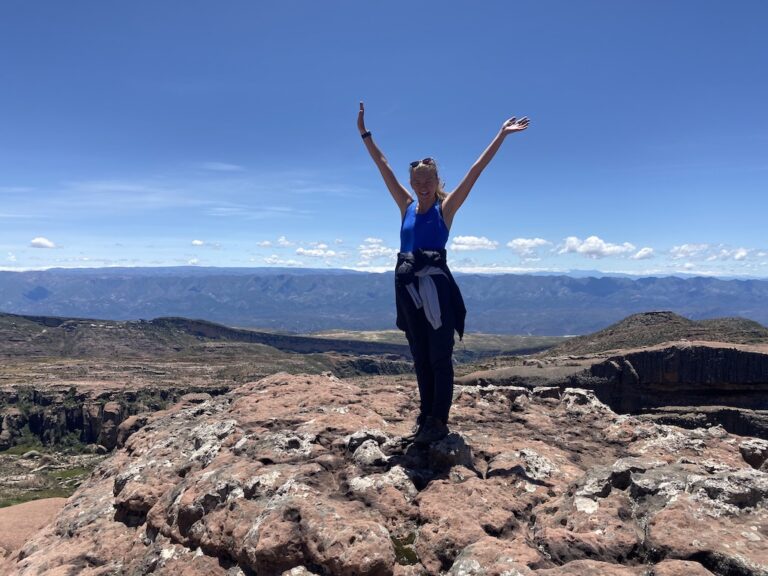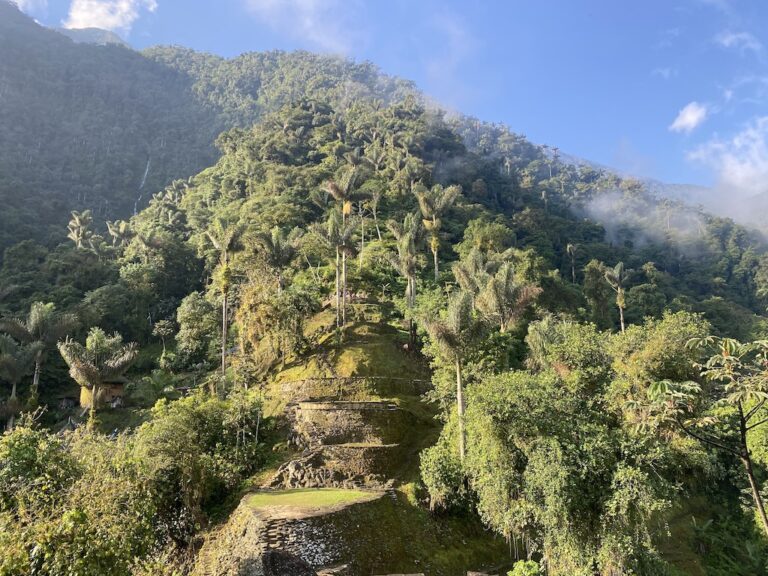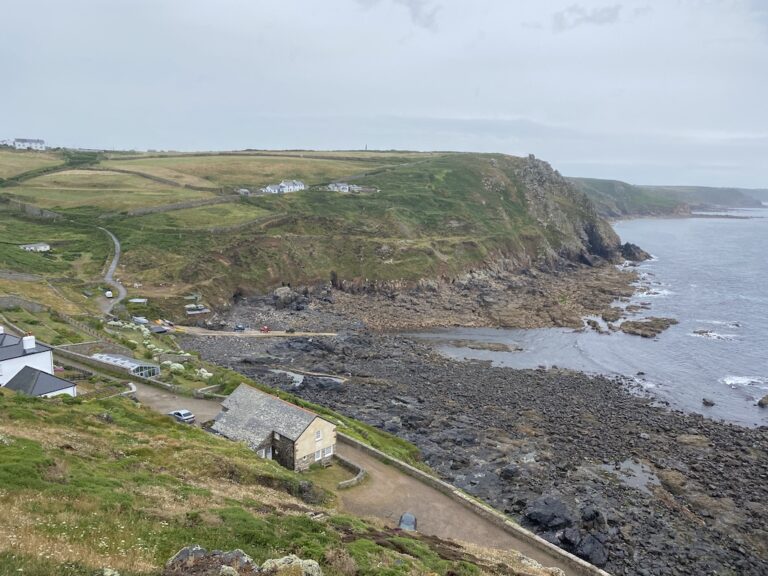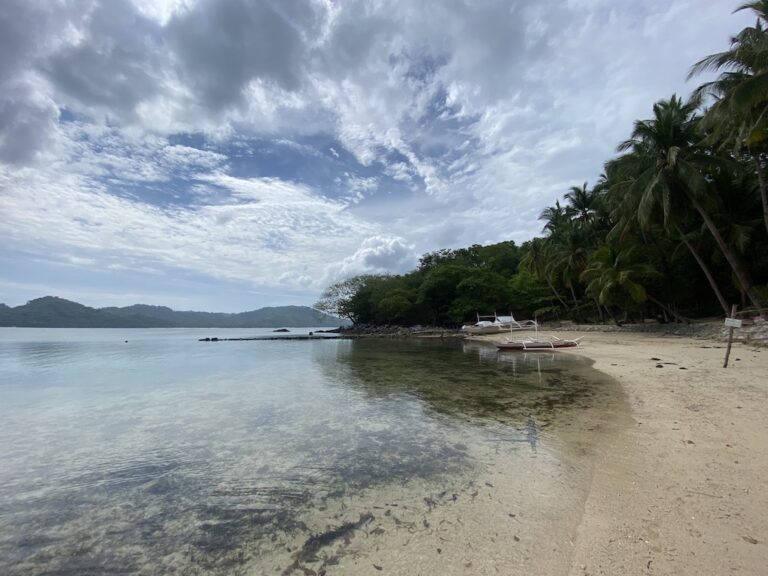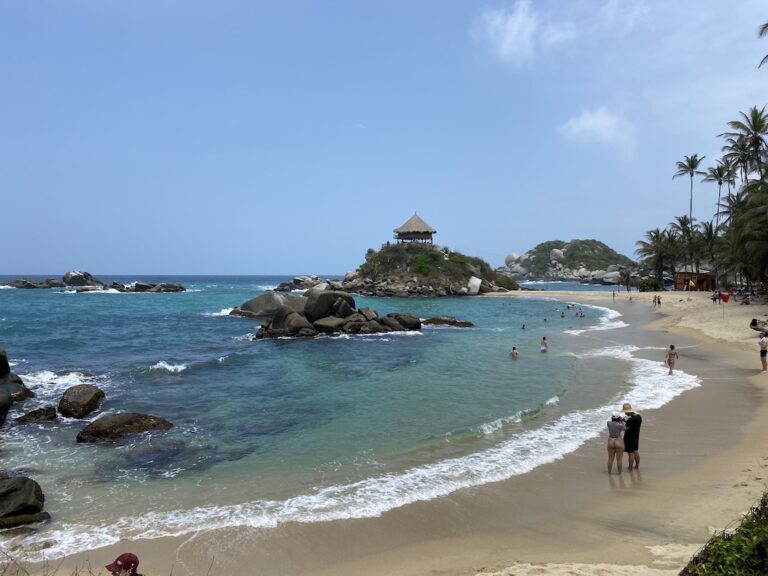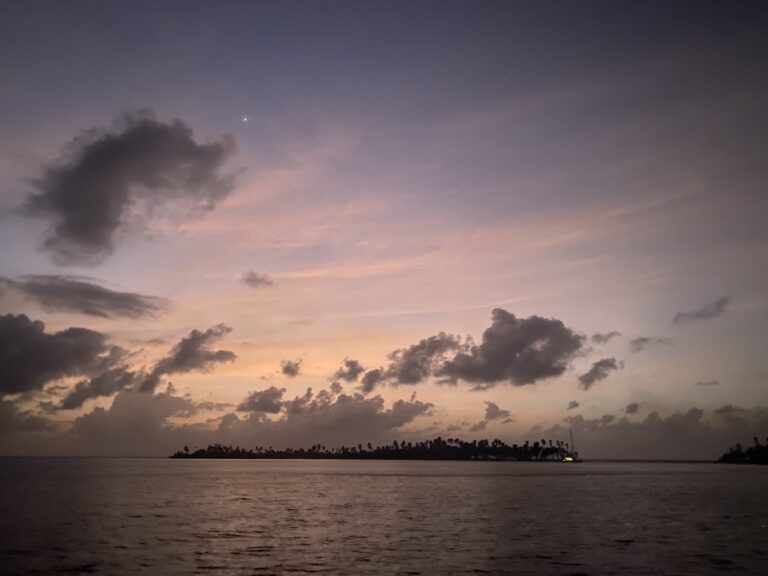Torotoro National Park, Bolivia: the simple day trip guide
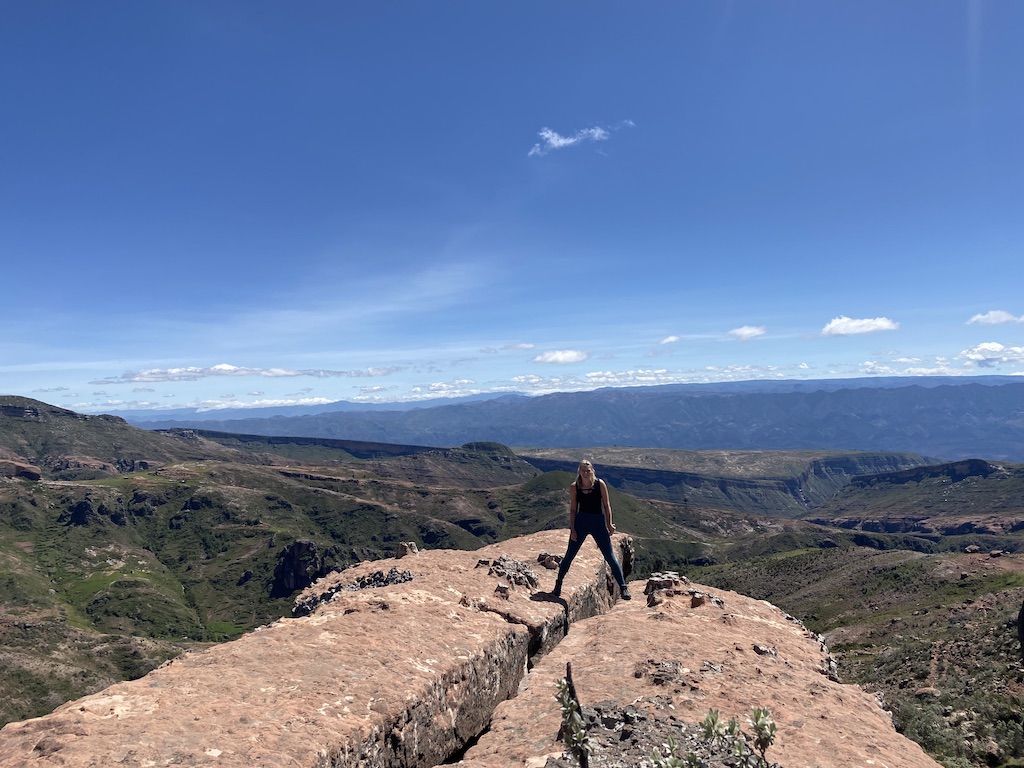
Torotoro National Park in Bolivia is an amazing place to visit. It’s a hiker’s paradise and there are lots of interesting attractions to explore. Think waterfalls, canyons, caves and fossils.
As slightly off the beaten track, organising a trip to Torotoro can sometimes seem daunting. One of the most complicated parts of it is organising day trips within the park. Given there’s a requirement to be accompanied by a guide, it isn’t as simple as in other areas of South America.
Therefore, I’ve written this guide to help you plan day trips within the park. I begin with a list of places you can visit in Torotoro, so you know the options and can get a better sense of what to see. Afterwards, I give you practical information on how to buy your entrance ticket, organise a tour group and choose a route for each day.
I hope it is useful for your travels!
By the way, I’ve also written a more general visitors’ guide to Torotoro – a good place to start for practical information on how to get there and where to stay. Read on for more specific information about the day tours on offer.
Where can you visit in Torotoro National Park?
1. Ciudad de Itas
Around one hour’s 4×4 drive from Torotoro, you’ll find an unusual landscape comprising orange rock formations, crevasses and arching caves. This is Ciudad de Itas, one of the top attractions within Torotoro National Park.
Ciudad de Itas is located in the hills above Torotoro. During our visit, we spent around 2 hours at Ciudad de Itas, doing a short but physically draining circuit around the area. This was a little hike over uneven ground, where we squeezed through gaps in the rocks and headed into caves. Our guide pointed out little cave drawings left by prehistoric communities.
Our tour guide was obsessed with pointing out the rock formations that looked like animals. This was as close as we got to understanding the geology of the area!
Ciudad de Itas is absolutely stunning and has a similar landscape to other areas of Bolivia, such as Eduardo Avaroa National Reserve near Uyuni. However, it is one of the further away spots inside the park, so it can work out more expensive than other attractions. Also, whilst the caves were cool, we only spent half an hour or so inside them!
Just to note, the track up there is bumpy. A few times I worried the jeep was going to go off the side! As you’re heading up, keep your eye on the left as you can see a giant syncline (a fold where rock layers have been folded into a U-shaped structure): the most obvious one I’ve ever seen!
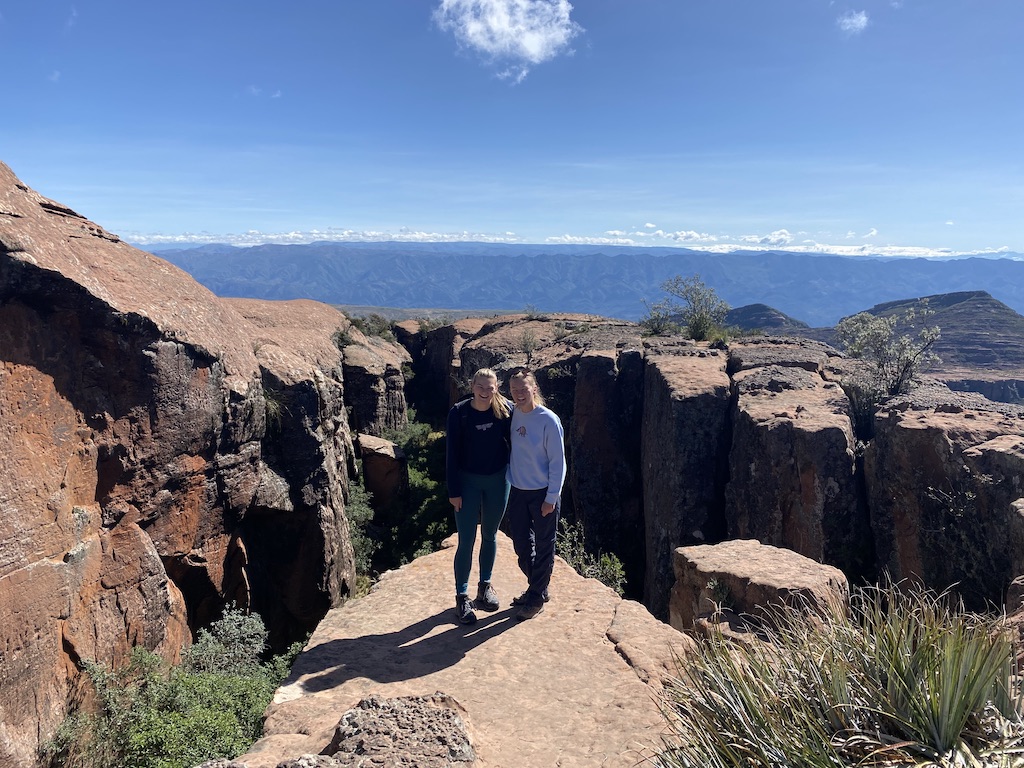
2. Caverna de Umajalanta
Another popular attraction within Torotoro National Park is the Caverna de Umajalanta. This is a cave which you can enter, following a well-established circuit with a guide.
When visiting, we spent around 2 hours in the cave, we entered at the giant mouth of the cave, then followed the path of a subterranean river, scrambling over damp bedrock. At points, we had to wriggle through small gaps in the rock on our belly. This is definitely not a place to visit if you get claustrophobic! There are ropes and hand holds to help in the most difficult sections. You’ll also be equipped with a head torch and hard hat.
As we moved through the cave, at several points we entered larger chambers (or “rooms”), containing stalagmites. Unfortunately, the stalagmites have not been protected so most are broken, with few to their full length. On a positive note for us, visitors can at least observe the rings of limestone which build up to form each stalagmite. The lack of preservation does unfortunately seem to be a common theme within Torotoro National Park.
In one chamber, there’s a stalagmite formation known as the “organ”, which you’ll recognise; it’s on the 10 bs note!
Apparently you can find blind cavefish within the cavern, but I can’t find any articles which verify this.
Keep your eye out for the dinosaur footprints on the path between the cave and car park. They are impressive but not protected at all, so some of them will probably resemble puddles or be filled in with mud!
- What to wear? You’ll be scrambling over rocks, so we opted for full length clothing to prevent any scrapes. Your clothes will get damp and muddy!
- Is it safe? To be honest I’m not convinced by Torotoro’s safety protocols. That being said, our guide was knowledgeable, and we felt very safe in the caves in his hands.
- The practical details. There are lockers at the entrance where you can leave your bag and valuables – bring your own lock. There’s a paid-for toilet and small shop near the entrance.
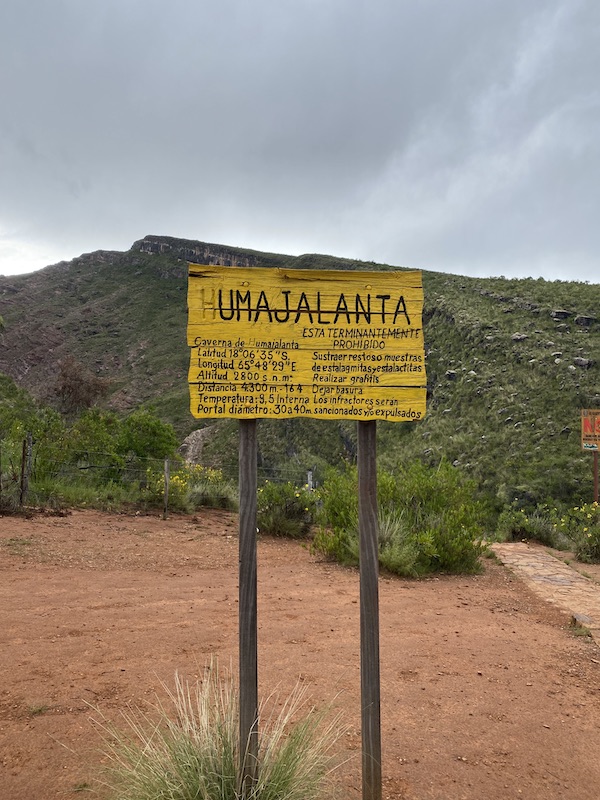
3. Tururumi
You’ll find another impressive landscape at Tururumi, an area close to Ciudad de Itas. Like Ciudad de Itas, there are rock formations which you can walk around on a loop with a guide.
I really liked the landscapes present here, which I personally thought were better than those at Ciudad de Itas. However, you won’t find any caves or drawings at Tururumi.
Supposedly it is possible to abseil at Tururumi, which you can do down the side of the rocks. However, when I went I didn’t see this at all. I got the impression this wasn’t an option for the classic day tour.
We probably spent 90 minutes exploring the area, walking over the rocks and soaking in the views. Right at the end there are panoramic views of the surrounding valley and canyons, which were pretty amazing.
One thing we didn’t know about Tururumi in advance is that there are several little pools. One of our group went in for a swim and reported it was very cold, but with the water being so still and clear I was pretty jealous! It may be worth bringing your bathing suit in case you want to do the same.
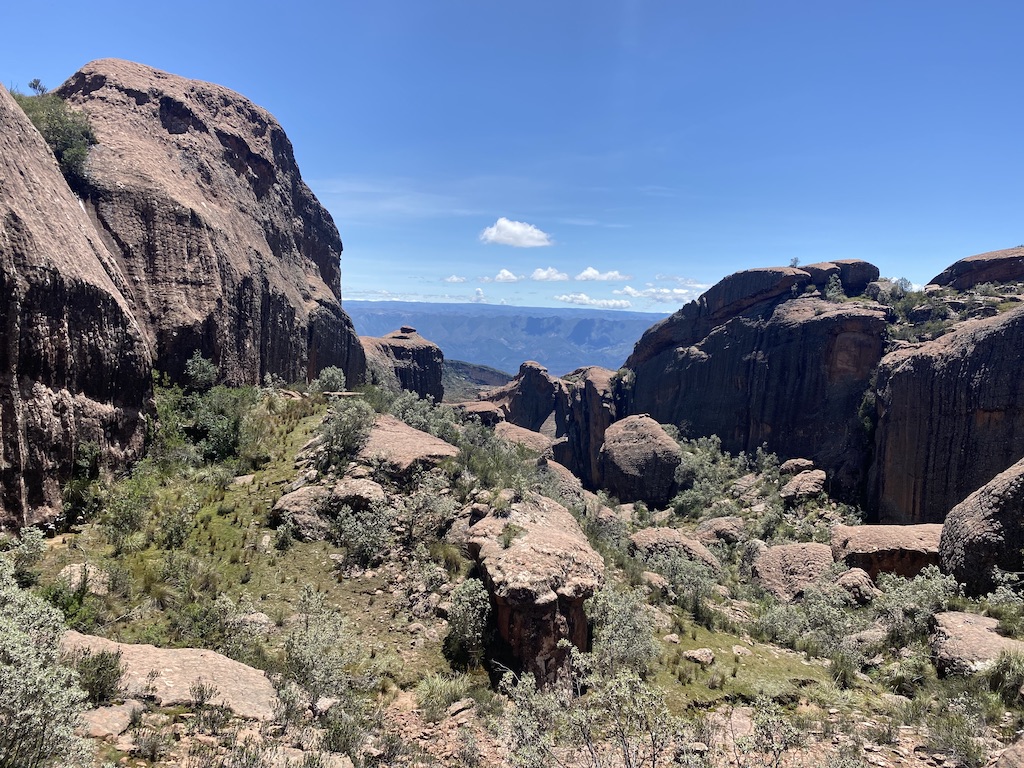
4. El Vergel
A short drive from the town, you’ll find an impressive canyon, aptly named Cañon de Torotoro (Torotoro Canyon). This is a 250 to 300 m deep canyon which you can descend into and is so impressive. It’s home to one of the most well-known photo spots of Torotoro: a metal viewing platform over the side of the canyon, which gives you panoramic views.
Within the canyon, there’s a pretty waterfall called El Vergel. Vergel means “garden” in English. Apparently the name reflects that it comes from a spring which never dries up, even when there’s no rain, so the side of the waterfall is always green and mossy.
You can shower under El Vergel (warning: it’s pretty cold!), and with the surrounding river canyon views and canyon walls rising all around, it is a sight to behold.
El Vergel was probably my favourite place in Torotoro. Sitting opposite the waterfall and looking up and around me, even though I was sitting deep within a canyon, I felt like I was on top of the world!
Note that to get here, you have to go up and down a lot of stairs. You’ll also have to scramble over rocks.
We probably spent two or three hours visiting El Vergel, although we continued along the canyon further so I don’t know how long it takes if you return up the same stairs.
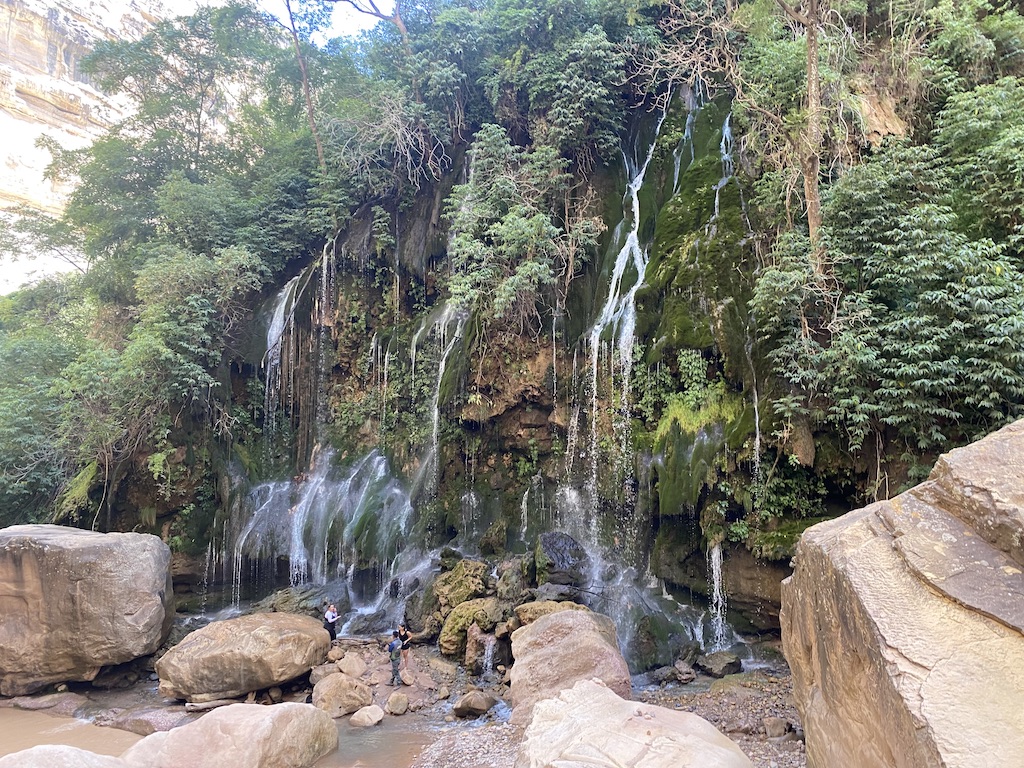
5. Chiflón Qaqa
When we were visiting Cañon de Torotoro, our group decided to continue through the canyon and visit a second waterfall, whose name I just can’t remember.
Now, I was sold this trip – which adds a couple of hours onto the trip to El Vergel – as “visiting a second waterfall”. It should actually be called primitive canyoning, without ropes or equipment. For me and Lou, this meant a lot of pain and having to hold back tears as we slid and fell our way across the canyon! It was so physically demanding and we weren’t prepared for it at all.
We’d see our guide and other members of the group disappear off into the distance, with all the grace and knowledge of canyoning we wish we had. Then, we would be left figuring out how to get over giant boulders and the ginormous gaps between them, or down vertical rock faces. So many times, our guide had to turn back to help us after realising we were nowhere to be seen.
Early on, I fell through one of the gaps between the boulders: not my finest moment. Safety is definitely not Torotoro National Park’s strong point!
Partway through, we had to wade through a thigh high river. It was very muddy and slippery, and almost reached our hips. After all that and a long upwards scrabble, our guide pointed to a little waterfall on the other side of the canyon. That was it!
From later research, I believe the main draw was actually the cave from which the waterfall emerges (Chiflón Qaqa). After researching this, I don’t think we ever went inside.
Overall, I’m glad I did this final bit of the trip, but it’s put me off canyoning for life…
6. Dinosaur footprints
You’ll find dinosaur footprints close to almost every attraction in Torotoro National Park, including Caverna de Umajalanta and El Vergel. Over 3,500 footprints have been reportedly discovered in the park.
The dinosaur footprints date back to the Cretacious period, with the oldest footprints being around 86 million years old. During this time, the area that is now Torotoro was a wetland, leading to great preservation of the footprints.
Most of the tours within Torotoro National Park involve a pit stop at some footprints, so you won’t need to try very hard to see some!
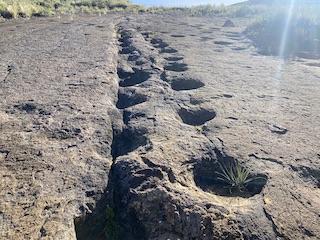
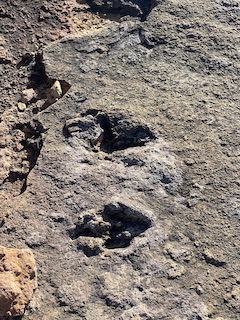
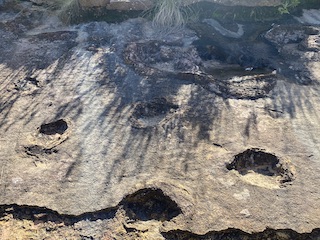
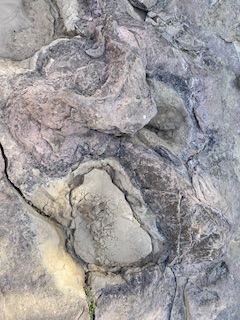
7. Turtle cemetery
Not too far outside town, you’ll find the turtle cemetery, which features a range of turtle fossils.
We heard that the turtle cemetery was a bit meh, so we didn’t visit when we went. But perhaps it’ll be an interesting stop for others!
8. Pachamama Wasi
Another interesting stop is Pachamama Wasi. This is a house-museum filled with all sorts of trinkets, such as fossils and stones, which have been collected from the mountains around Torotoro.
To be honest, I can’t find much information about this place, and didn’t visit it myself. However, if you have spare time in Torotoro, perhaps it’s worth taking a look!
9. Llama Chaqui
Elsewhere in Torotoro National Park, you’ll find Llama Chaqui, the remains of a pre-Incan structure. A long hike is required to reach it, but as it is placed on a strategic vantage point, I can imagine it treats you to amazing views.
Llama Chaqui just wasn’t on my radar when visiting and I have no idea if it’s actually worth a visit, to be honest. But if you’re in Torotoro already, it may be worth checking it out!
How to organise tours in Torotoro National Park
Organising tours in Torotoro National Park is fairly easy, but can be a little stressful depending on how it goes. But don’t worry, I’m here to help!
Buying your entrance ticket
Anyone entering Torotoro National Park has to buy an entrance ticket.
Each ticket costs 100 bs ($15 / £11) and is valid for four days. If you’re staying for longer than this, be careful with when you buy it. The rangers normally stamp it from the same day – i.e. the day you buy it will be the first of the four days it’s valid for.
However, we bought our tickets at 3 pm, so the ranger stamped it for the next day. If you arrive at the office late and after the last possible tour, it may be worth asking for this as well!
You can buy tickets from the hut next to the guide’s office. It’s easy to find; just look for “Asociación de guias Torotoro PNT” on Google Maps. Conveniently they open at 7 am and are open until around 4 pm, so you can buy tickets on the morning before any tours if need be.
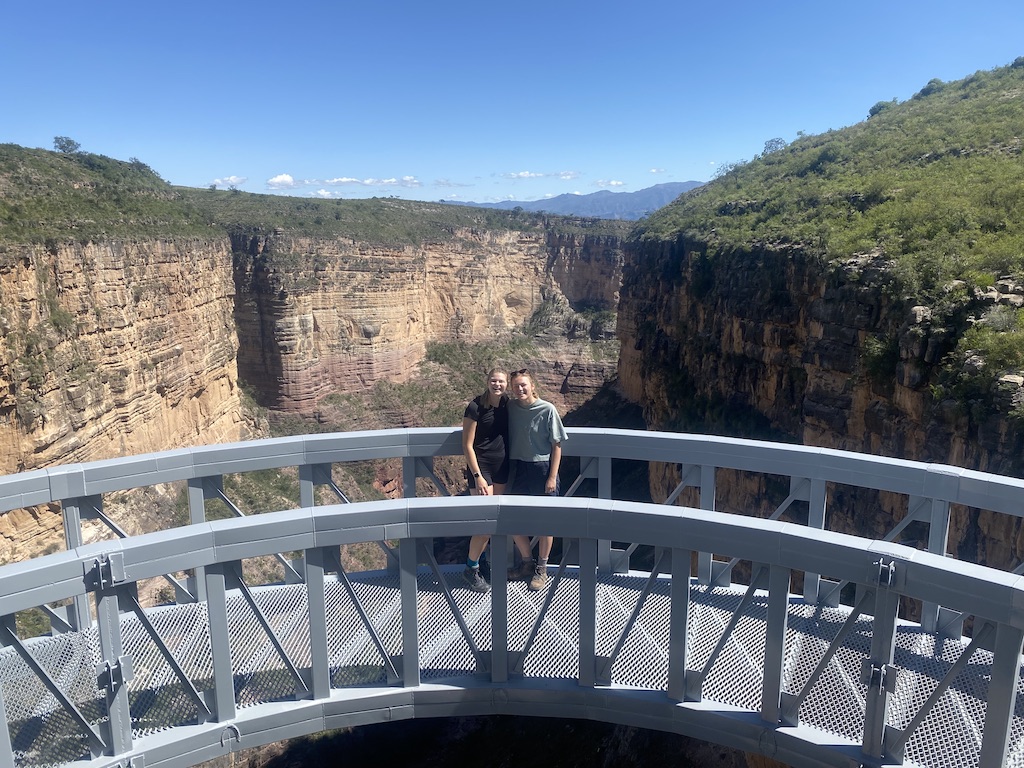
Requirement for a guide
Torotoro National Park is a bit annoying in that you can’t enter it without a local guide. It would make sense for sensitive or dangerous sites to require a guide – however, the areas of the park nearest to the town would be fine to visit on your own.
I can understand that the use of local guides is important to local industry. However, at some points it seemed a little excessive.
The requirement for a guide means that you can’t explore on your own, and most people’s experiences of the park will be limited to what is offered on tours. That isn’t to say you can’t explore further – you’ll just need to do so on a private tour, which will be more expensive and difficult to organise.
By the way, most guides only speak Spanish.
Forming a group
All tours in Torotoro National Park have a price per group, not per person. Whether there’s one person or six people, the price is the same!
The maximum group size is 6 people, equivalent to the capacity of a 4×4. To keep costs down, travellers try to form a group of this size. Having a bigger group also made it way more fun for us when we were in the park.
To make sure you can form a group, I’d suggest turning up early. The guide’s office opens at 7 am so we were recommended to turn up before 7:30 am, as this is when most people arrive. It also helps if you’re flexible with your plans in case there’s a mostly formed group just needing an extra person or two.
To improve your chances of a group, you can also chat to people in your hostel as it may be they have the same plans as you; everyone is in the same boat with forming your groups so there’s no harm in asking!
Also, once you’ve got a group, it’s worth asking what their plans are for subsequent days. Making tour arrangements is so much simpler when you already have a group for the next day.
Personally, we joined an already-formed group of four on our first day. The next day we met up with two of them again, keeping the same tour guide, which was breezy.
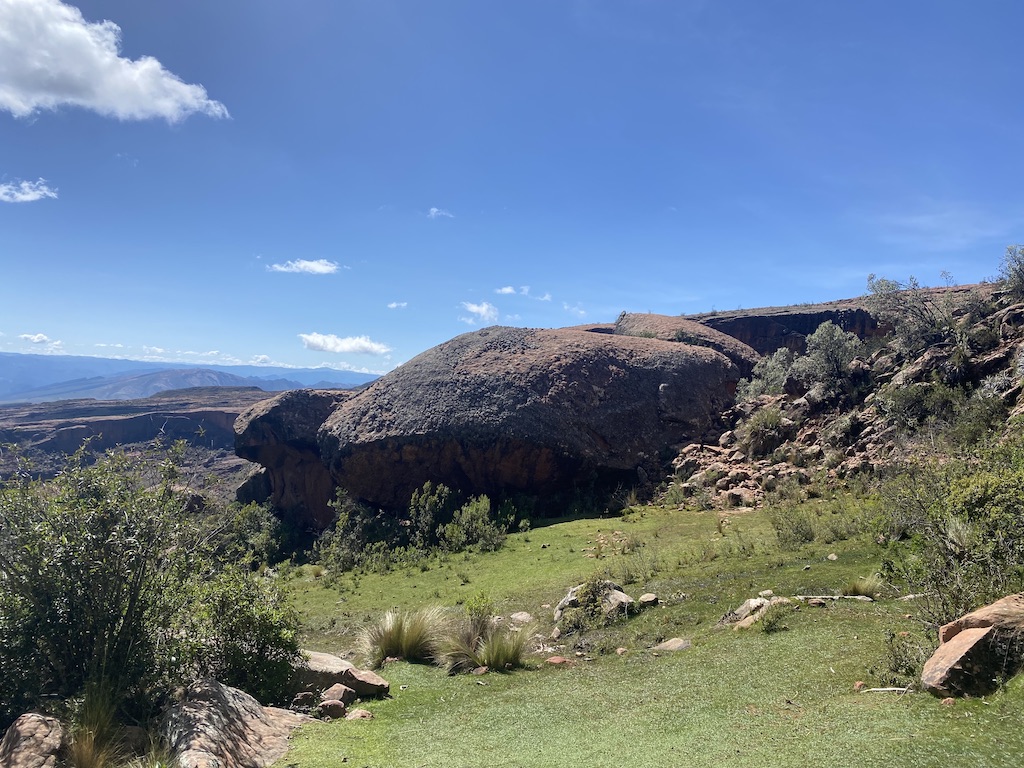
Where should you go?
Once you’ve formed a group, you can decide where to go. On your first day in the park, this should be fairly easy as you won’t have visited anywhere in Torotoro already. However, in subsequent days, having an idea of where you want to go can be useful, as some groups will have a different itinerary in mind.
There are several popular routes through the park. Ciudad de Itas, Caverna de Umajalanta and El Vergel are half-day trips that can be combined in any order. Meanwhile, El Vergel can be extended to a full day if you continue through the canyon. Llama Chaqui most likely requires a full day, and the turtle cemetery will only take a couple of hours.
I’d recommend the trips we did. The timings and locations fitted together well:
- Ciudad de Itas, Tururumi and Caverna de Umajalanta
- Full day in Torotoro Canyon, visiting El Vergel
What should you do for lunch?
An important question is the food options within Torotoro National Park. I can only advise on what we did, which worked well. Our guide organised all these for us, so I’d suggest talking to them when you’re arranging the itinerary.
- Close to Caverna de Umajalanta, there’s a restaurant which we stopped at for lunch. It cost 20 bs ($3 / £2) for two courses and was pretty good.
- When visiting El Vergel, our guide ordered us toasted sandwiches from a place in Torotoro town, which we picked up before heading to the canyon. These each cost 8 bs ($1.20 / £0.90) and were pretty good!
What happens once you’ve formed a group?
After you’ve formed a group, you can talk to one of the guides at the office. There were plenty milling about both times we were there, so I can’t imagine a situation where all guides are regularly out of the office.
The guide will provide a price for the trip. Everyone in the group will have to fill in their details in a form, so the office knows who’s going out on the trip, and a select few will need to go to the kiosk to pay for the trip. The whole process is very slow – no one at the office is in a hurry! It took us around half an hour both times, which is quite ridiculous.
This is the point to ask about lunch options and establish timings if you need to leave Torotoro on the same day.
Once everything’s sorted, you’ll need to wait for a 4×4 driver to come available, which shouldn’t take too long. You’ll then get in the 4×4 and head to your first destination.
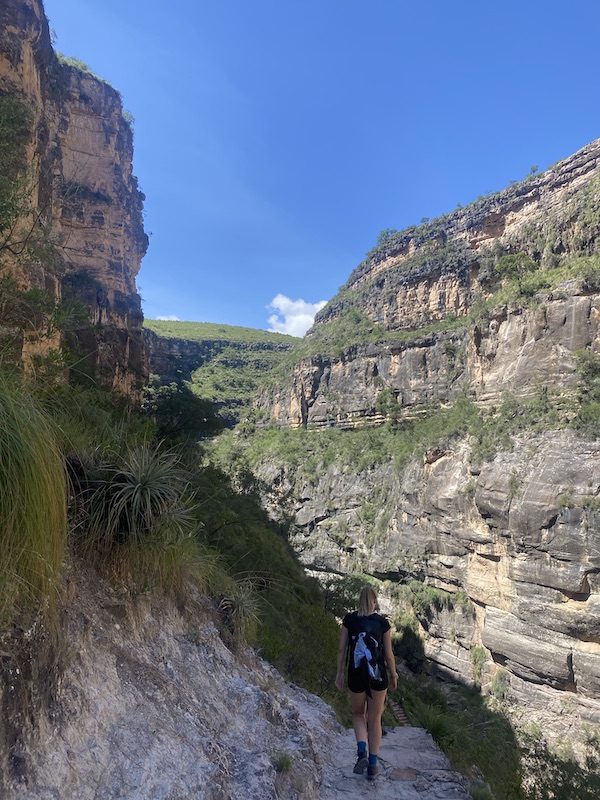
Private tours
If you don’t want to wait to form a group or want to visit more niche destinations, there’s also the option of taking a private tour.
These are pretty easy – just go straight to the guide’s office. You’ll need to pay for the whole vehicle, but the plus side is you can go wherever you want and have maximum flexibility with your plans.
Can you pre-book a tour?
If you are organising your own tour at the guide’s office, you can not pre-book it for the next day.
Believe me, we tried! Our group tried to reserve our guide for our second day in the park to no avail. He was there when we arrived the next day so it was fine, but I have no doubt that if they’d been busy earlier on, he would’ve been gone.
Fortunately, organising a tour in the morning is pretty easy and, with the exception of Bolivian holidays, I don’t think you’d have any problems organising a tour in this way.
Our experience organising tours
I figured I’d also share my personal experience organising tours in Torotoro National Park.
The first day in the park, we turned up at the guide’s office at 7:30 am. There were four people looking for two final members for their tour group, so we joined them to visit Ciudad de Itas, Tururumi and Caverna de Umajalanta. All four were super nice and had great Spanish, which was a big help. The tour cost 100 bs ($15 / £11) per person, including transportation, guide and equipment hire.
At the end of that day we planned to join two of the group for a tour the next day. We met at 8 am and waited for a half hour to see if we might find others to join with, but we didn’t have much success. Still, as we were visiting Torotoro Canyon, which is closer to the village, the cost per person was still cheaper than the day before, at 70 bs ($10 / £8).
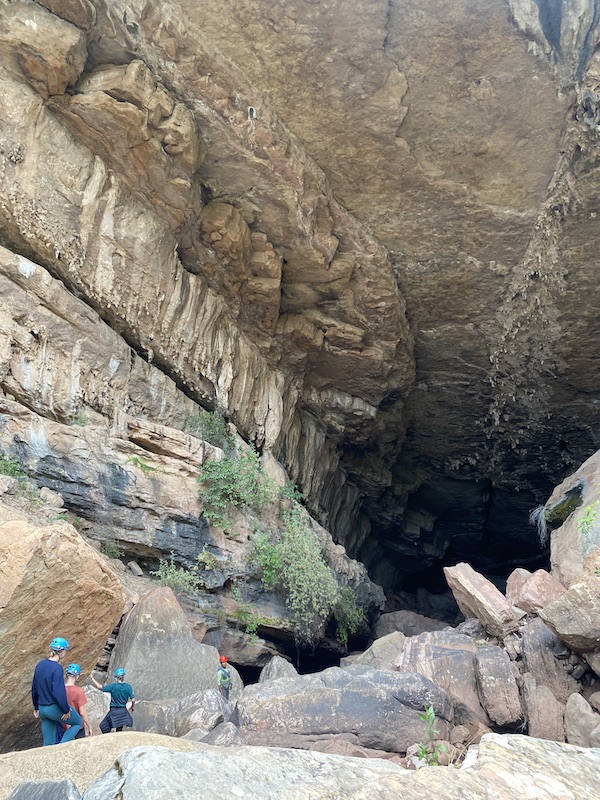
Conclusion
I loved my visit to Torotoro National Park. Whilst there’s no denying it is more stressful to visit than other parts of Bolivia, the breadth of what’s on offer, from pretty waterfalls to caves and canyons, makes it all worth it.
I hope this guide simplifies the process of organising day trips in the park, and helps you with your planning.
Do you have any questions about visiting Torotoro? Let me know in the comments!

